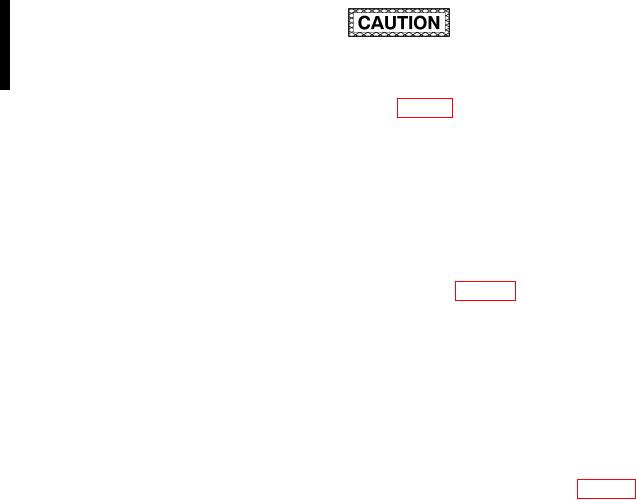
TM 1-1510-262-10
2-21. ENGINE FUEL CONTROL SYSTEM.
a. Description. The basic engine fuel system consists of an engine driven fuel pump, a fuel control unit, a fuel
low divider, a dual fuel manifold, fourteen fuel nozzles, and a purge system. The fuel purge system forces residual
fuel from the manifolds to the combustion chamber where it is consumed.
b. Fuel Control Unit. One fuel control unit is mounted on the accessory case of the engine. This unit is a
hydro-pneumatic metering device which determines the proper fuel low schedule for the engine to produce the
amount of power requested by the relative position of the associated POWER lever. The control of developed engine
power is accomplished by adjusting the engine gas generator (N 1 ) speed. N 1 speed is controlled by varying the
amount of fuel injected into the combustion chamber through the fuel nozzles. Engine shutdown is accomplished
by moving the appropriate CONDITION lever to the full aft FUEL CUTOFF position, which shuts off the fuel supply.
2-22. POWER LEVERS.
Moving the power levers below the light idle gate without the engines running may result in damage
to the reverse mechanism linkage.
The two power levers are located in the control pedestal (Fig. 2-19), and are placarded POWER . These levers reg-
ulate power in the reverse, idle, and forward ranges, operating so that forward movement increases engine power.
Power control is accomplished through adjustment of the N 1 speed governor in the fuel control unit. Power is in-
creased when N 1 RPM is increased. The POWER levers also control propeller reverse pitch. Distinct movement
(pulling up and then aft on the POWER lever) by the pilot is required for operation in the ground ine and reverse
ranges. Upper lever travel range is designated INCR (increase), supplemented by an arrow pointing forward. Lever
travel range is marked IDLE , LIFT , GROUND FINE , LIFT , and REVERSE . A placard below the lever slots reads
" CAUTION - REVERSE ONLY WITH ENGINES RUNNING ".
2-23. CONDITION LEVERS.
The two CONDITION levers are located in the control pedestal (Fig. 2-19). Each lever starts and stops the fuel
supply, and controls the idle speed for its engine. The levers have three placarded positions: FUEL CUTOFF ,
LOW IDLE , and HIGH IDLE . In the FUEL CUTOFF position, the condition lever controls the cutoff function of its
engine-mounted fuel control unit. From LOW IDLE to HIGH IDLE , they control the governors of the fuel control
units to establish minimum fuel low levels. LOW IDLE position sets the fuel low-rate to attain 60 to 62% (at sea
level) minimum N 1 and HIGH IDLE position sets the rate to attain 71 to 73% minimum N 1 . The POWER lever for
the corresponding engine can select N 1 above the respective idle setting, up to maximum power. An increase in low
idle N 1 will be experienced at high ield elevation.
2-24. FRICTION LOCK KNOBS.
Friction drag of the engine and propeller control levers is adjusted, as applicable, by four friction lock knobs. The
friction lock knobs, placarded FRICTION LOCK , is located on the control pedestal (Fig. 2-19). One knob is below
the PROPELLER levers, one is below the CONDITION levers, and two are below the POWER levers. When a knob
is rotated clockwise, friction is increased, opposing movement of the affected lever asset by the pilot. Counterclock-
wise rotation of the knob will decrease friction, thus permitting free and easy lever movement.
Change 1

